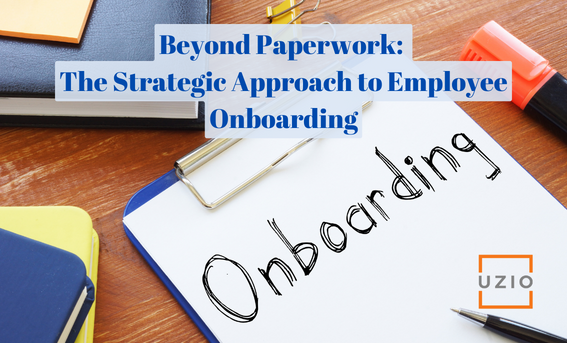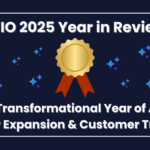
Employee Onboarding – the importance of creating the right experience
Quick links
-
Introduction
-
The Importance of a Systematic Approach
-
Onboarding Checklist for New Business Owners
-
Workspace Setup
-
Socialization With the Team
-
Orientation Sessions
-
Schedule Check-Ins and Training
-
Key Takeaways
1. Introduction
Hiring and onboarding new employees is a critical process for any business, large or small. It sets the tone for an employee’s experience with your company and can impact their long-term success and satisfaction. A bad onboarding experience can lead to confusion, frustration, and a lack of motivation among new hires. This, in turn, can result in decreased productivity and increased turnover rates, which ultimately affects the overall success of your company. Some reports show it takes approximately 11.2 months of joining an organization for employees to reach their full potential. With poor onboarding you can expect poor employee retention.
According to research employee turnover cost on average is 33% of a worker’s annual salary just to replace one employee. Additionally, low productivity due to stress and anxiety can cost your business $600 per worker annually. So you can see, for an SMB business owners’ without a dedicated HR team, it’s particularly important to create a structured onboarding program to ensure that every new hire receives the same level of attention and information. This process not only helps to reduce first-day jitters but also lays the groundwork for integrating new employees into your company culture and operations.
2. The Importance of a Systematic Approach
A standardized onboarding process ensures that all legal requirements are met and that each employee is equipped with the tools and knowledge they need to perform their job effectively. It’s not just about paperwork; it’s about making your new team members feel welcome and prepared. From setting up their workspace to explaining benefits and conducting regular check-ins, every step should be planned and executed with care.
3. Onboarding Checklist for New Business Owners
Complete New Hire Paperwork
Completing new hire paperwork is a fundamental first step in the onboarding process. It involves gathering and filing all the legal and formal documents necessary to employ someone legally and ethically. This process is critical because it ensures that your business complies with labor laws and taxation requirements. It also provides a clear contract between the employer and the employee regarding job expectations and obligations.
- Key Documents to Complete:
- Form I-9: Verifies the employee’s legal right to work in the United States.
- Tax Forms: Ensures the correct tax withholdings and reporting.
- Employment Contract: Outlines the terms of employment, including salary, job responsibilities, and conditions of employment.
- Legal Documents: Protects proprietary information and business interests.
- Employee Handbook: Informs the employee about company policies and procedures.
- Benefits Explanation: Details the company’s benefits programs and eligibility.
- Job Description: Clarifies the employee’s role and expectations.
Devices and Credentials
Providing devices and credentials is essential for equipping your new hire with the tools they need to perform their job functions. This step is about more than just hardware; it’s about ensuring that new employees have access to the information and systems they need to be productive and effective.
- Essential Technology and Access:
- Computers, phones, and other necessary devices.
- Login information for email, intranet, and essential software.
- Permissions for access to necessary data and communication channels.
4. Workspace Setup
Creating a workspace that is both welcoming and functional is crucial for a new employee. A well-set-up workspace helps new hires feel valued and ready to start contributing to the team. It’s also an opportunity to demonstrate your company’s culture and values through the environment you provide.
- Components of a Well-Prepared Workspace:
- Desk, chair, and other necessary office furniture.
- Office supplies and equipment.
- Welcome kit with company-branded items and a guide to the office.
5. Socialization With the Team
Socialization is a vital aspect of integrating new employees into the company culture. It involves formal and informal activities designed to introduce new hires to their colleagues and immerse them in the workplace community. This part of the process can significantly affect an employee’s ability to work well within the team and their overall job satisfaction.
- Key Socialization Activities:
- Team introductions and a new hire announcement.
- Social gatherings such as a team lunch or welcome event.
- Inclusion in team meetings and group projects from the outset.
6. Orientation Sessions
Orientation sessions provide a structured way for new employees to learn about the company, its policies, and their benefits. These sessions are essential for communicating expectations, resources, and the support available to help employees navigate their new workplace.
- Essential Orientation Topics:
- Explanation of health benefits, insurance plans, and other employee programs.
- Detailed review of the employee handbook, safety guidelines, and technology use.
- Assignment of a peer mentor for ongoing support.
7. Schedule Check-Ins and Training
Scheduling regular check-ins and training is crucial for monitoring the progress of new hires and providing ongoing support and education. These check-ins serve as milestones for the employee’s development and offer opportunities to give and receive feedback on the onboarding experience.
- Important Check-In Milestones:
- Immediate feedback opportunity following the onboarding sessions.
- Scheduled training sessions to enhance skills and knowledge.
- Formal check-ins at one week, 30 days, 60 days, and 90 days to track progress and address concerns.
Recommended Reading: Affordable 401(k) Plans that Sync with Payroll and Benefits
8. Key Takeaways
- Complete legal and informative paperwork to ensure compliance and clarity
- Provide necessary technology and access to enable productivity
- Prepare a personal and equipped workspace for a warm welcome
- Encourage team socialization for cultural integration
- Conduct thorough orientation to align understanding of company practices
- Plan regular check-ins and training for continuous employee development
By following this comprehensive checklist, SMB business owners can create a consistent and effective onboarding process that fosters a positive work environment and sets the stage for new employee success. By following this structured approach, you’ll help your new hires to become productive, engaged members of your team from day one.
Get in touch with us for an expert-led demo to know more about UZIO payroll services.





